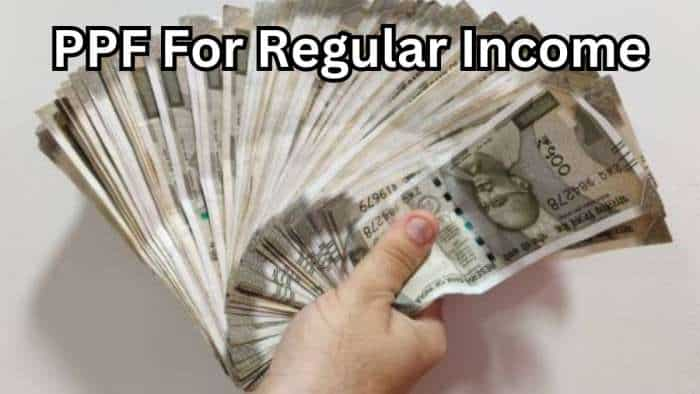Explained: What SEBI’s proposed open interest changes mean for F&O traders
Capital market regulator Securities and Exchange Board of India (SEBI) has proposed changes to its current method of monitoring open interest in equity derivatives, in a move aimed at enhancing surveillance in the segment. Read on to learn about this development in detail.
)
The Securities and Exchange Board of India (SEBI), the country’s capital market regulator, has proposed a crucial change to the way it measures open interest in the derivatives segment—futures and options (F&O) trades—to increase surveillance in the high-octane segment on Dalal Street. The change marks a shift from the current practice of measuring notional based open interest (OI) across futures and options contracts. Open interest is an important metric in the derivatives segment, gauging market activity in contracts.
Read on to learn about the main proposed changes in detail.
Proposed Changes in Futures Trading & Options Trading Rules
Under the new method, open interest will be measured on the basis of equivalent (FutEq), and not notional value.
Also known as FutEq in market parlance, future equivalent refers to the number of future contracts necessary to hedge an equivalent position.
It is calculated by aggregating change in price (delta) associated with the position.
In another noteworthy measure, SEBI has also proposed a new method to determine the market-wide position limit (MWPL). According to the regulator, the limit is proposed to be set at 60 times of cash volumes or 15 per cent amount of the free float.
MWPL is an important metric in the futures and options segment that determines the maximum number of open derivative contracts that can be held for a specific stock.
Besides, SEBI has also proposed to change the current method of gauging mutual funds and alternative investment funds’ exposure to futures, according to a circular dated February 24.
Proposed Change in OI Reading Method | A more accurate snapshot of total risk at given time
Analysts say that a more accurate assessment of open interest may reduce the chances of a stock falling into the F&O ban list significantly and hence boost trading convenience on in the market.
It may also reduce the chances of entities running large positions—especially in index options—while notionally showing low open interest.
Additionally, along with suggested minimum conditions for the creation of F&O indices, a better measurement of risk may lead to lower risks of manipulation across cash and derivatives segments as well as excessive volatility.
Here are some of the other key proposals:
- A dedicated pre-open and post-closing session for equity derivatives
- A linkage between derivative positions with cash market volumes
- The permission to create fresh positions even during an F&O ban if the new positions are meant to reduce risk
- The permission to buy a put option or sell a call option in case of a long futures contract
- Close surveillance of intraday positions in single stocks; clearing corporations will check data four times in a session.
- In options, premium will be measured on the basis of the future equivalent, and not short or long positions
- A three-fold increase in the end-of-day threshold applicable to index futures to Rs 1,500 crore
- An intraday threshold of Rs 2,500 crore for index futures
- Futures contracts with non-benchmark indices as underlying assets under certain conditions
- For this, the index must have a minimum of 14 stocks, with the weightage of the largest stock being up to 20 per cent
- Also, the cumulative weightage of the three largest stocks should not exceed 45 per cent
SEBI Invites Comments on Latest Proposals
SEBI has invited comments and suggestions from stakeholders such as retail investors and other market participants, intermediaries, investor associations and academic institutions, by March 17.
The proposed changes confirm an earlier Zee Business report suggesting that the regulator was considering additional measures for the F&O segment. READ MORE
Catch key stock market updates here. For all other news, visit Zeebiz.com.
Get Latest Business News, Stock Market Updates and Videos; Check your tax outgo through Income Tax Calculator and save money through our Personal Finance coverage. Check Business Breaking News Live on Zee Business Twitter and Facebook. Subscribe on YouTube.
RECOMMENDED STORIES

SIP Calculation at 12% Annualised Return: Rs 1,000 monthly SIP for 20 years, Rs 4,000 for 5 years or Rs 10,000 for 2 years, which do you think works best?

Gratuity Calculation: What will be your gratuity on Rs 45,000 last-drawn basic salary for 6 years & 9 months of service?

PPF For Regular Income: How can you get over Rs 18 lakh/year tax-free income from Public Provident Fund?
07:49 PM IST








 SEBI slaps penalty on Indian Clearing Corporation over regulatory lapses
SEBI slaps penalty on Indian Clearing Corporation over regulatory lapses Sebi warns public against buying properties of HBN Dairies
Sebi warns public against buying properties of HBN Dairies  Sebi revises timelines for issuance of consolidated account statements for depositories
Sebi revises timelines for issuance of consolidated account statements for depositories Sebi proposes disclosure of financial information in offer documents for REITs, InvITs
Sebi proposes disclosure of financial information in offer documents for REITs, InvITs  SEBI rejects US businessman Gaekwad's bid for competing offer in Religare stake sale
SEBI rejects US businessman Gaekwad's bid for competing offer in Religare stake sale